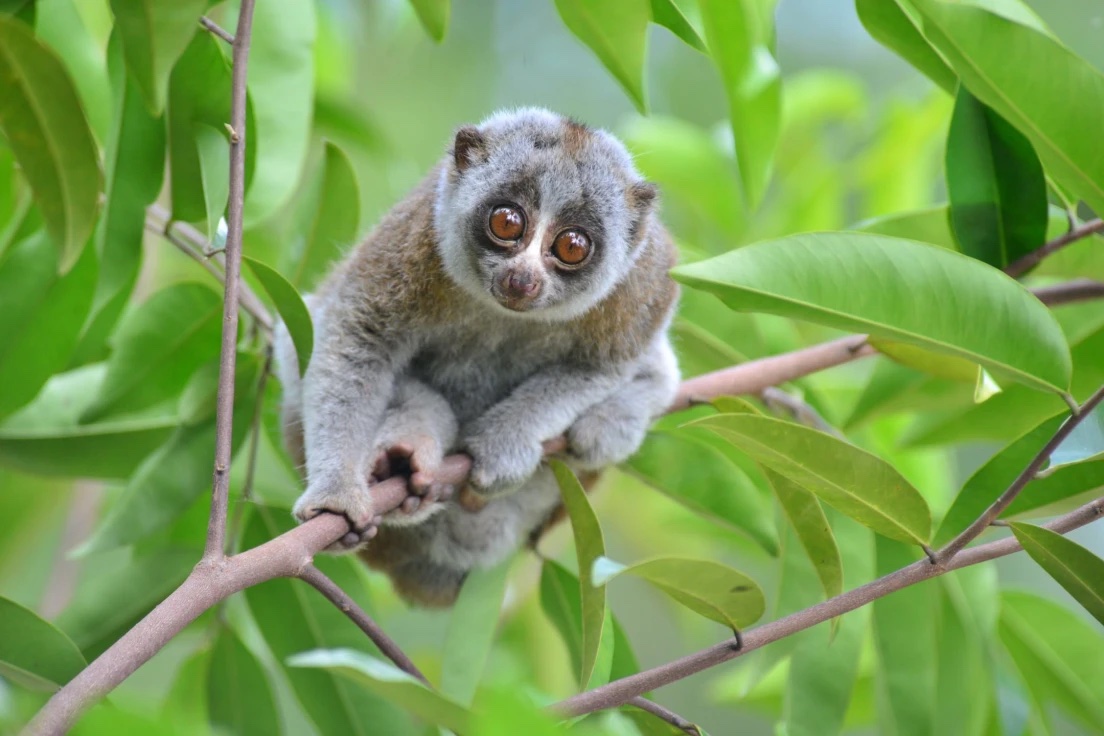
The slow loris, with its big, round eyes and lethargic movements, has captured hearts around the world. But behind this cute exterior lies a surprising secret – slow lorises are venomous! This FAQ dives into the fascinating world of these unique primates, addressing some of the most common questions.
Q: Are slow lorises poisonous?
A: No, slow lorises are not poisonous. However, they are venomous. A special gland on their inner arm produces a venom that can be extremely dangerous to small predators and can even cause allergic reactions in humans.
Q: Are slow lorises aggressive?
A: Slow lorises are not typically aggressive animals. They are nocturnal and solitary, preferring to avoid confrontation. However, if they feel threatened, they may lick their brachial gland (the one on their inner arm) and bite, introducing venom through their teeth.
Q: Can I keep a slow loris as a pet?
A: Absolutely not! Slow lorises are wild animals with specific needs that cannot be met in a typical home environment. The illegal pet trade is a major threat to slow loris populations. Additionally, their venom can pose a serious health risk to humans.
Q: What do slow lorises eat?
A: Slow lorises are omnivores, meaning they eat both plants and animals. Their diet primarily consists of fruits, insects, nectar, and occasionally small vertebrates like lizards and birds.
Q: Where do slow lorises live?
A: Slow lorises are native to Southeast Asia, inhabiting rainforests and other forested areas in countries like Vietnam, Cambodia, Indonesia, and the Philippines.
Q: Are slow lorises endangered?
A: Yes, unfortunately, many slow loris species are classified as Vulnerable or Endangered by the IUCN Red List. Habitat loss due to deforestation and the illegal pet trade are significant threats to their survival.
Q: How many species of slow lorises are there?
A: The exact number of slow loris species can depend on the classification system used by different authorities. Here’s a breakdown based on two common classifications:
- At least eight species: This is the most widely accepted classification. Slow lorises belong to the genus Nycticebus, and within this genus, at least eight distinct species are recognized.
- Up to nine species: Some classifications may recognize up to nine species of slow loris. This difference can arise from ongoing research and debates about the subspecies classification of certain slow loris populations.
Here are some examples of slow loris species:
- Sunda slow loris (Nycticebus coucang)
- Bengal slow loris (Nycticebus bengalensis)
- Javan slow loris (Nycticebus javanicus)
- Philippine slow loris (Nycticebus menagensis)
- Pygmy slow loris (Nycticebus pygmaeus)
It’s important to note that classifications can change as scientific understanding evolves. Regardless of the exact number, there are several distinct slow loris species facing various threats in their Southeast Asian habitats.
Q: How can I help slow lorises?
A: There are several ways you can help slow lorises:
- Support organizations working to protect slow loris habitats and combat the illegal pet trade.
- Educate yourself and others about the threats slow lorises face.
- Avoid sharing photos or videos that promote the keeping of slow lorises as pets.
- Support businesses that use sustainable practices and don’t contribute to deforestation.
By understanding these fascinating creatures and the challenges they face, we can all play a role in ensuring their survival for generations to come.
More photos below ↓











